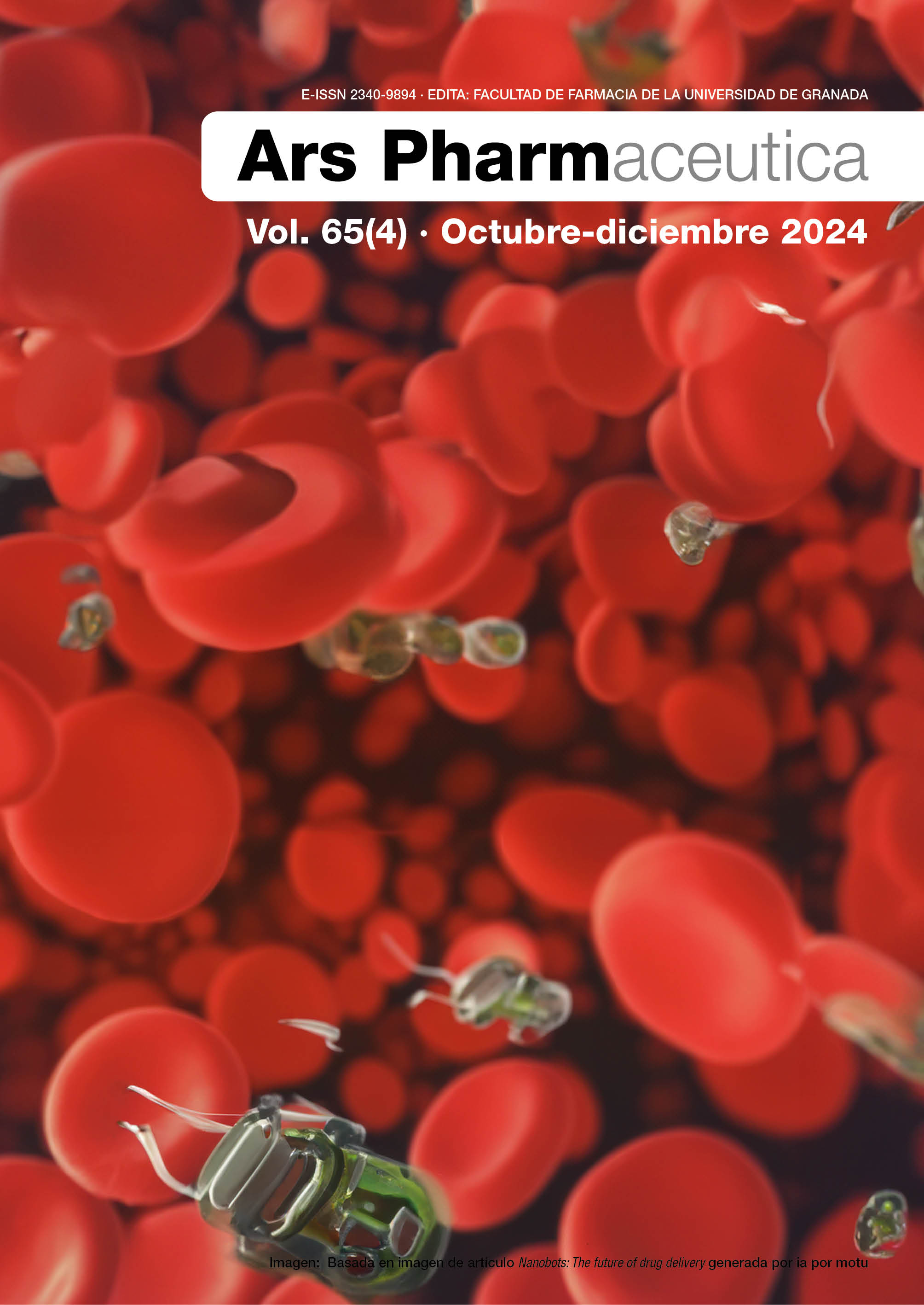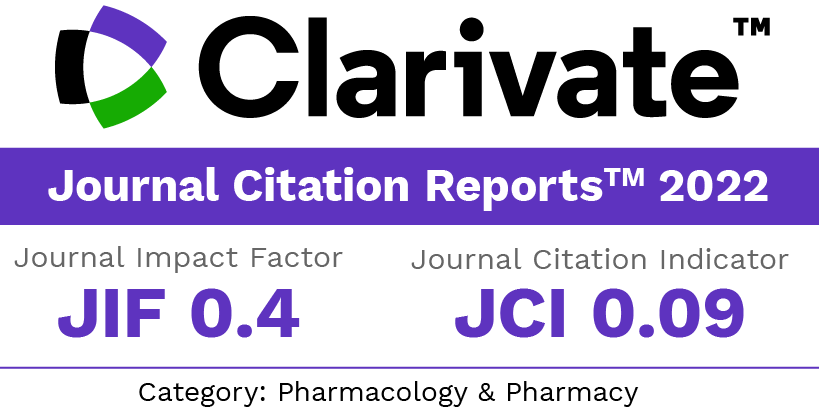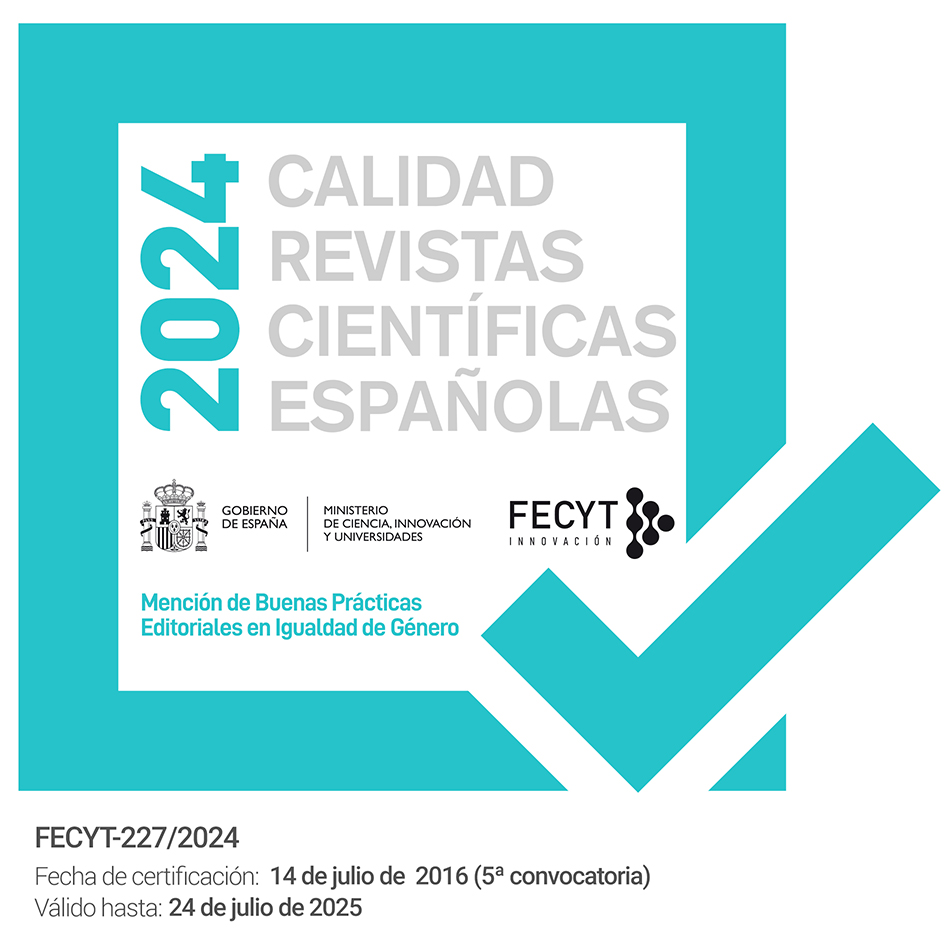Nanobots: The future of drug delivery
DOI:
https://doi.org/10.30827/ars.v65i4.31068Keywords:
Nanotechnology, Nanobots, Medicine delivery, Precision, Infected cellsAbstract
Introduction: Since the introduction of nanorobotics, the discipline of medicinal chemistry has seen an exponential development in the uses of nanotechnology. One of the most potential uses of nanotechnology is in the creation of nanobots, which can be applied to a variety of industries such as medicine delivery, medical imaging, and even the benefits of nanobots include their small size, light weight, great flexibility, high sensitivity, and big thrust-to-weight ratio. Nanobots have several uses and are being investigated in many domains. This review’s objective is to provide an overview of the rapidly developing field of medicinal chemistry’s nanorobotics and its potential applications in disease detection, treatment, and prevention.
Method: Several articles and newsletters are considered and used as a reference to collect information regarding nano and microbots and a brief information was written in accordance to use in medicine delivery.
Results: Various review articles were taken into consideration to provide a deep knowledge on the utilization of nano and microbots in drug delivery and treatment therapy of several diseases.
Conclusions: The main parts of the robots and the many kinds of nanobots are covered separately. The future perspective and initiatives that can help us realize our dreams of creating small robots that can move around inside our bodies, administering medication with previously unattainable precision, locating and eliminating infected cells, and most importantly making science fiction, a reality is finally covered.
Downloads
References
T Das, S Sultana. Multifaceted applications of micro/ nanorobots in pharmaceutical drug delivery systems: a comprehensive review. Futur J Pharm Sci. 2024; 10(2): 1-10. Doi: 10.1186/s43094-023-00577-y. DOI: https://doi.org/10.1186/s43094-023-00577-y
Vargason AM, Anselmo AC, Mitragotri S (2021) The evolution of commercial drug delivery technologies. Nat Biomed Eng 5(9):951–967. Doi: 10.1038/s41551-021-00698-w. DOI: https://doi.org/10.1038/s41551-021-00698-w
Parida S, Bari AR. Nanobots for Medicinal Applications. Austin J Nanomed Nanotechnol. 2023; 11(1): 1067. DOI: https://doi.org/10.26420/austinjnanomednanotechnol.2023.1067
Jain KK. Advances in the field of nanooncology. BMC Med. 2010; 8: 83. Doi: 10.1186/1741-7015-8-83. DOI: https://doi.org/10.1186/1741-7015-8-83
Misra R, Acharya S, Sahoo SK. Cancer nanotechnology: application of nanotechnology in cancer therapy. Drug DiscovToday. 2010; 15: 842-850. Doi: 10.1186/1741-7015-8-83. DOI: https://doi.org/10.1016/j.drudis.2010.08.006
Bharali DJ, Mousa SA. Emerging nanomedicines for early cancer detection and improved treatment: current perspective and future promise. Pharmacol Ther. 2010; 128: 324-335. Doi: 10.1016/j.pharmthera.2010.07.007. DOI: https://doi.org/10.1016/j.pharmthera.2010.07.007
Matsue T. Bioimaging with micro/nanoelectrode systems. Anal Sci. 2013; 29: 171-9. Doi: 10.2116/analsci.29.171. DOI: https://doi.org/10.2116/analsci.29.171
Chi X, Huang D, Zhao Z, Zhou Z, Yin Z, et al. Nanoprobes for in vitro diagnostics of cancer and infectious diseases. Biomaterials. 2012; 33: 189-206. Doi: 10.1016/j.biomaterials.2011.09.032. DOI: https://doi.org/10.1016/j.biomaterials.2011.09.032
Choi YE, Kwak JW, Park JW. Nanotechnology for early cancer detection. Sensors (Basel). 2010; 10: 428-55. Doi: 10.3390/s100100428. DOI: https://doi.org/10.3390/s100100428
Sivasankar M, Durairaj RB. Brief Review on Nano Robots in Bio Medical Applications. J of Advanced Robot Automat. 2012; 1: 101. Doi: 10.4172/ 2168-9695.1000101 .
Mehra P, Nabhi K. A Nanorobotics - The Changing Face of Dentistry. IJSR. 2016; 5: 192-197. DOI: https://doi.org/10.21275/v5i3.NOV161810
Nandkishor K, Swapnil P, Rajeshwar K, et al. Review on application of nanorobots in health care. World J pharmacy and pharmaceutical sciences. 2014; 3: 472-480.
Mahesh Kumar P, Shreya K, Nikhil A, Amber M. Nanorobotics based drug delivery system: Recent developments and future prospects. IJCRT. 2023; 11(1): c630- c640.
Sanjay S. Patel, Poojan N. Patel. A Brief Review on Nanorobotics Applications in Medicine and Future Prospects. Asian Journal of Research in Pharmaceutical Sciences. 2023; 13(1):19-8. Doi: 10.52711/2231-5659.2023.00004. DOI: https://doi.org/10.52711/2231-5659.2023.00004
M Suhail, A Khan, M Abdur Rahim, A Naeem, M Fahad, S F Badshah, A Jabar & Ashok Kumar J. Micro and nanorobot-based drug delivery: an overview. Journal of Drug Targeting. 2022; 30(4): 349-358. Doi: 10.1080/1061186X.2021.1999962. DOI: https://doi.org/10.1080/1061186X.2021.1999962
Chen W, Sun M, Fan X, et al. Magnetic/pH-sensitive doublelayer microrobots for drug delivery and sustained release. Appl Mater Today. 2020;19:100583. DOI: https://doi.org/10.1016/j.apmt.2020.100583
Nguyen HV, Faivre V. Targeted drug delivery therapies inspired by natural taxes. J Control Release. 2020;322: 439–456. DOI: https://doi.org/10.1016/j.jconrel.2020.04.005
Sachdeva S, Mani A, Mani SA, et al. Nano-robotics: the future of health and dental care. IP Int J Periodontol Implantol. 2021;6(1):6–10. DOI: https://doi.org/10.18231/j.ijpi.2021.002
Znidarsic A, Baggia A, Werber B. Attitudes toward microchip implant in groups pro and con its insertion for healthcare purposes. 2020. BLED 2020 Proceedings 1; [cited 2021 Oct 28]. Available from: https://aisel.aisnet.org/bled2020/1.
Kumar JP, Sankaranarayanan R, Sujana JA, et al. Nanomedicine manufacturing and applications: advantages and disadvantages of nanodevices. Amsterdam: Elsevier; 2021. DOI: https://doi.org/10.1016/B978-0-12-820773-4.00015-9
Manjunath A, Kishore V. The promising future in medicine: nanorobots. Biomed Sci Eng. 2014;2(2):42–47.
Schalley CA, Beizai K, Vogtle F. On the way to rotaxane-based molecular motors: studies in molecular mobility and topological chirality. Acc Chem Res. 2001;34(6):465-76. Doi: 10.1021/ar000179i. DOI: https://doi.org/10.1021/ar000179i
Bhushan B. Biomimetics: lessons from nature–an overview. Philos Trans A Math Phys Eng Sci. 2009;367(1893):1445-86. Doi: 10.1098/rsta.2009.0011, PMID 19324719. DOI: https://doi.org/10.1098/rsta.2009.0011
Cho KJ, Koh JS, Kim S, Chu W, Hong Y, Ahn S. Review of manufacturing processes for soft biomimetic robots. Int J Precis Eng Manuf. 2009;10(3):171-81. Doi: 10.1007/s12541- 009-0064-6. DOI: https://doi.org/10.1007/s12541-009-0064-6
Chu WS, Lee KT, Song SH, Han M, Lee J, Kim H. Review of biomimetic underwater robots using smart actuators. Int J Precis Eng Manuf. 2012;13(7):1281-92. Doi: 10.1007/s12541- 012-0171-7. DOI: https://doi.org/10.1007/s12541-012-0171-7
Ghosh A, Fischer P. Controlled propulsion of artificial magnetic nanostructured propellers. Nano Lett. 2009;9(6):2243-5. Doi: 10.1021/nl900186w. DOI: https://doi.org/10.1021/nl900186w
Zhang D, Liu S, Guan J and Mou F, “Motile-targeting” drug delivery platforms based on micro/nanorobots for tumor therapy. Front. Bioeng. Biotechnol. 2022 ; 10:1002171. Doi: 10.3389/fbioe.2022.1002171. DOI: https://doi.org/10.3389/fbioe.2022.1002171
Dai, L., Liu, J., Luo, Z., Li, M., and Cai, K. (2016). Tumor therapy: targeted drug delivery systems. J. Mat. Chem. B 4 (42), 6758–6772. Doi: 10.1039/C6TB01743F. DOI: https://doi.org/10.1039/C6TB01743F
Wicki, A., Witzigmann, D., Balasubramanian, V., and Huwyler, J. Nanomedicine in cancer therapy: Challenges, opportunities, and clinical applications. J. Control. Release. 2015; 138–157. Doi: 10.1016/j.jconrel.2014.12.030. DOI: https://doi.org/10.1016/j.jconrel.2014.12.030
Mengyi Hu, Xuemei Ge, Xuan Chen, Wenwei Mao, Xiuping Qian, Wei-En Yuan. Micro/Nanorobot: A Promising Targeted Drug Delivery System. Pharmaceutics. 2020; 12(7): 665. Doi: 10.3390/pharmaceutics12070665. DOI: https://doi.org/10.3390/pharmaceutics12070665
Gautham G, Y Maddahi, K Zareinia. A Brief Review on Challenges in Design and Development of Nanorobots for Medical Applications. Applied science. 2021; 11: 10385. Doi: 10.3390/app112110385. DOI: https://doi.org/10.3390/app112110385
Ammi, M.; Frémont, V.; Ferreira, A. Automatic camera-based microscope calibration for a telemicromanipulation system using a virtual pattern. IEEE Trans. Robot. 2009; 25(1): 184–191. Doi: 10.1109/TRO.2008.2006866. DOI: https://doi.org/10.1109/TRO.2008.2006866
Wang, B., Zhang, Y.,Zhang L. Recent progress on micro-and nano-robots: Towards in vivo tracking and localization. Quant. Imaging Med. Surg. 2018; 8, 461. Doi: 10.21037/qims.2018.06.07. DOI: https://doi.org/10.21037/qims.2018.06.07
Azizian, M.; Najmaei, N.; Khoshnam, M.; Patel, R. Visual servoing in medical robotics: A survey. Part II: Tomographic imaging modalities–techniques and applications. Int. J. Med Robot. Comput. Assist. Surg. 2015; 11: 67–79. Doi: 10.1002/rcs.1575. DOI: https://doi.org/10.1002/rcs.1575
Flückiger, M.; Neild, A.; Nelson, B.J. Optimization of receiver arrangements for passive emitter localization methods. Ultrasonics 2012, 52, 447–455. Doi: 10.1016/j.ultras.2011.03.012. DOI: https://doi.org/10.1016/j.ultras.2011.03.012
Liang, Z.; Teal, D.; Fan, D.E. Light programmable micro/nanomotors with optically tunable in-phase electric polarization. Nat. Commun. 2019; 10: 5275. Doi: 10.1038/s41467-019-13255-6. DOI: https://doi.org/10.1038/s41467-019-13255-6
R. Maheswari, S. Sheeba Rani, V. Gomathy, P. Sharmila, Cancer detecting nanobot using positron emission tomography. Procedia computer science. 2018;133: 315-322. Doi: https://doi: 10.1016/j.procs.2018.07.039. DOI: https://doi.org/10.1016/j.procs.2018.07.039
S. Mali. Nanotechnology for surgeons. Indian journal of surgery. 2013; 75(6):485-492. Doi: 10.1007/s12262-012-0726- y. DOI: https://doi.org/10.1007/s12262-012-0726-y
Y. Zhang, Y. Zhang, Y. Han, X. Gong. Micro nanorobots for medical diagnosis and disease treatment. Micromachines. 2022; 13(5): 648. Doi: 10.3390/mi13050648. DOI: https://doi.org/10.3390/mi13050648
A. Pedram, H.N. Pishkenari, Smart micro nanorobotic systems for gene delivery. Curr Gen Ther. 2017; 17(2): 73-79. Doi: 10.2174/1566523217666170511111000. DOI: https://doi.org/10.2174/1566523217666170511111000
N.J. Shetty, P. Swati, K. David, Nanorobots: Future in dentistry. 2013; 25(2): 49-52. Doi. DOI: https://doi.org/10.1016/j.sdentj.2012.12.002
Y. Feng, M. An, Y. Liu, MT. Sarwar, H. Yang,. Advances in chemically powered micro/nanorobots for biological applications: A review. Advanced functional materials. 2022. Doi: 10.1002/adfm.202209883. DOI: https://doi.org/10.1002/adfm.202209883
Elbialy NS, Fathy MM, Khalil WM. Doxorubicin loaded magnetic gold nanoparticles for in-vivo targeted drug delivery. Int J Pharm. 2015; 490(1–2):190–199. Doi: 10.1016/j.ijpharm.2015.05.032. DOI: https://doi.org/10.1016/j.ijpharm.2015.05.032
Dilnawaz F, Singh A, Mewar S, Sharma U, Jagannathan NR, Sahoo SK. The transport of non-surfactant based paclitaxel loaded magnetic nanoparticles across the blood brain barrier in a rat model. Biomaterials. 2012; 33(10):2936–2951. Doi: 10.1016/j.biomaterials.2011.12.046. DOI: https://doi.org/10.1016/j.biomaterials.2011.12.046
Ha Y-J, Lee S-M, Mun CH, Kim HJ, Bae Y, Lim J-H et al. Methotrexateloaded multifunctional nanoparticles with near-infrared irradiation for the treatment of rheumatoid arthritis. Arthritis Res Therapy. 2020; 22(1):1. Doi: 10.1186/s13075-020-02230-y. DOI: https://doi.org/10.1186/s13075-020-02230-y
Mohammadpour F, Kamali H, Gholami L, McCloskey AP, Kesharwani P, Sahebkar A. Solid lipid nanoparticles: a promising tool for insulin delivery. Expert Opin Drug Deliv. 2022; 19(12):1577–1595. Doi: 10.1080/17425247.2022.2138328. DOI: https://doi.org/10.1080/17425247.2022.2138328
Hu Y. Self-assembly of DNA molecules: towards DNA nanorobots for biomedical applications. Cyborg Bionic Syst. 2021. Doi: 10.34133/2021/9807520. DOI: https://doi.org/10.34133/2021/9807520
Published
How to Cite
Issue
Section
License
Copyright (c) 2024 Rama Rao Tadikonda

This work is licensed under a Creative Commons Attribution-NonCommercial-ShareAlike 4.0 International License.
The articles, which are published in this journal, are subject to the following terms in relation to the rights of patrimonial or exploitation:
- The authors will keep their copyright and guarantee to the journal the right of first publication of their work, which will be distributed with a Creative Commons BY-NC-SA 4.0 license that allows third parties to reuse the work whenever its author, quote the original source and do not make commercial use of it.
b. The authors may adopt other non-exclusive licensing agreements for the distribution of the published version of the work (e.g., deposit it in an institutional telematic file or publish it in a monographic volume) provided that the original source of its publication is indicated.
c. Authors are allowed and advised to disseminate their work through the Internet (e.g. in institutional repositories or on their website) before and during the submission process, which can produce interesting exchanges and increase citations of the published work. (See The effect of open access).























